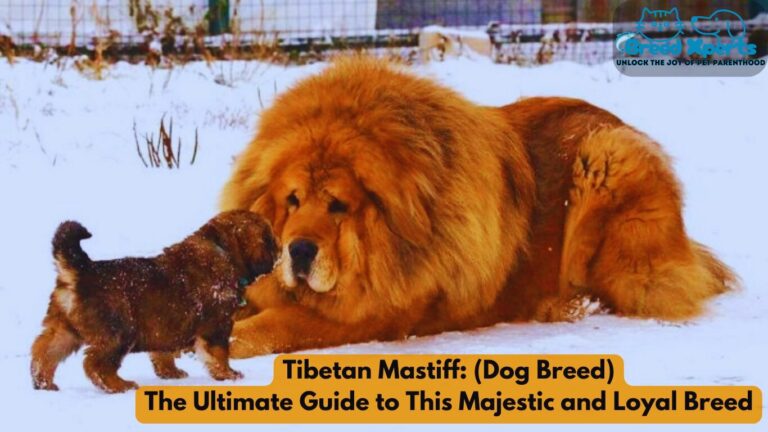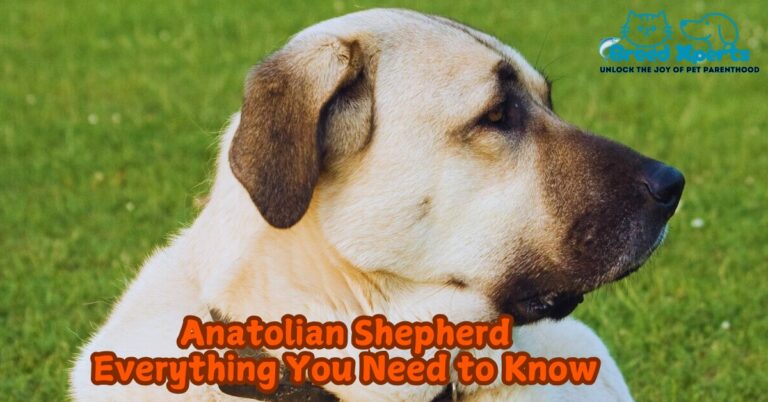How to Socialize a Caucasian Shepherd: 10 Useful Tips for a Confident, Friendly Dog
A large and devoted breed of dog, the Caucasian Shepherd is recognized for its incredible size and courageous appearance. This huge dog was developed in the Caucasus Mountains as a livestock guard dog to fend off threats, like wolves and bears. With its thick double coat powerful build and high instincts, this is a dog for extreme weather conditions and rugged territories.
Although they appear intimidating, these dogs are extremely loyal and protect their family. They form close bonds with their owners and are known to be gentle with children if trained correctly. However, their strong protective instincts require owners who can provide them with steady, reliable training and early socialization.
Caucasian Shepherds may not suit everyone, but for the ideal family, they are outstanding companions and protectors. If you’re thinking about this breed, get ready for a significant commitment and plenty of love back!
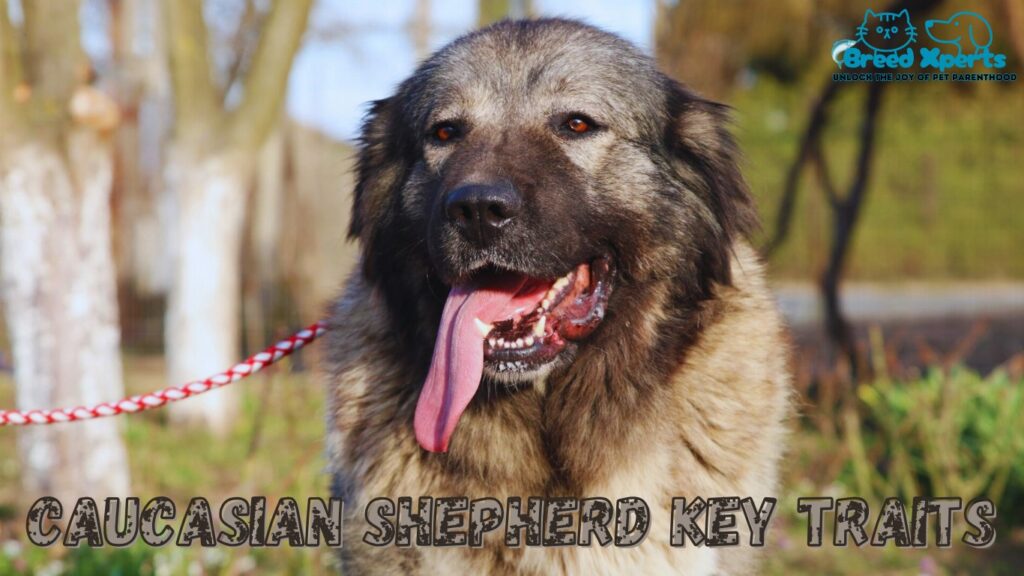
Key Traits
Group:
Working Group
Height:
- Males: 27–30 inches (68–76 cm)
- Females: 25–28 inches (64–70 cm)
Weight:
- Males: 110–220 pounds (50–100 kg)
- Females: 99–180 pounds (45–82 kg)
Personality/Temperament:
- Protective, loyal, confident, fearless, and independent. They are deeply devoted to their family and are natural guardians.
Energy Level:
- Moderate. While they are not overly energetic, they require regular exercise to maintain their health and prevent boredom.
Coat and Color:
- Thick, dense double coat designed for harsh climates.
- Colors include gray, fawn, red, cream, brindle, and white. Some have black masks or white markings.
Life Span:
- 10–12 years.
Special Traits:
- Strong guarding instincts.
- Requires firm training and early socialization.
- Best suited for experienced dog owners with space for this large breed.
Alert:
Certain nations, like Denmark and Russia, impose restrictions or bans on the Caucasian shepherd, so be sure to understand your local regulations before adopting this breed.
How to Socialize a Caucasian Shepherd 10 Useful Tips
Socialization of a Caucasian Shepherd is necessary to help it grow into a balanced and confident pet. Due to its natural guarding instincts and reliance on itself, the time and frequency of socialization are critical. Let’s see how to do it below:
- Start Early:
Socialize your Caucasian Shepherd puppy when it is relatively very young, ideally between 8 to 16 weeks. This is when it is also most sensitive to learning new experiences. - Expose to New Environments:
Bring your dog to other locations like parks, shops that are pet-friendly, and crowded streets. Let them expose themselves to numerous sights, sounds, and smells in a controlled environment. - Introduce to People:
Present your dog to people of various ages, sizes, and looks. Let them experience a peaceful, constructive environment. Reward your dog with treats and praise for nice behavior. - Meet Other Dogs:
Schedule playdates with amiable and socialized dogs. This will help your Caucasian Shepherd learn to interact suitably with other dogs. - Use Positive Reinforcement:
Reward your dog with treats, toys, and praise for being calm and self-assured in new situations or people. - Avoid Overwhelming Situations:
Gradually increase the strength of social interaction exposures. Do not rush or push your dog into something that will frighten him or her. - Enroll in Training Classes:
Socialization classes, or puppy school and obedience school, provide a controlled environment. A good trainer can help you manage this driven breed. - Maintain Consistency:
Socialization does not end at the puppy stage. Keep exposing your dog to new experiences and people throughout their lifetime to reinforce positive behavior. - Expose to Positive Experiences:
Socialise your dog to friendly people and animals in safe, controlled situations so that they learn good manners. - Be Patient and Consistent:
Caucasian Shepherds are independent and can be headstrong but are consistently trainable in a devoted patient manner, making them polite, confident animals.
Proper socialization will make a Caucasian Shepherd become a confident and well-behaved companion while retaining its guarding instinct.

Breed Overview
The Caucasian Shepherd Dog is a powerful and significant breed originating in the Caucasus Mountains. Known particularly for having great guarding instincts, this breed has been developed to guard farms and houses as it is faithful and courageous, though prone to developing deep bonds with its family.
This breed has tight, weatherproof fur that should withstand extreme weather. These dogs are various shades of color: gray, fawn, and brindle, to name some. These are large dogs that usually weigh much more than 100 pounds more than not.
While the Caucasian Shepherds are intelligent and independent dogs, they still require strong training and socialization. They naturally guard their territory; they may be aloof or wary of new, unfamiliar faces. Still, they also do very well in that setting where knowing owners will be able to cater to their need for exercise and training.
Diet & Nutrition
A healthy and powerful Caucasian Shepherd Dog will require a well-rounded diet. They need food contents of good-quality proteins, fats, and carbohydrates. Keep supplying them with fresh water to ensure they don’t stay dehydrated at any particular time during the day.
This large breed thrives on the nourishment suited for big dogs. Include them in recipes that contain lean proteins, vegetables, and grains. Do not overfeed, as they can gain weight easily and put pressure on their joints.
Specific dietary requirements should be discussed with the veterinarian when allergies or other health issues start appearing in pets. Treats can be allowed, but they should be nutritionally valuable as well. A nutritionally rich diet maintains them energetic and enables them to hold a healthy, vibrant, thick coat.
Lifespan
The average lifespan for a Caucasian Shepherd Dog is between 10 and 12 years, and proper care, regular veterinarian visits, and a good diet help them live their lives much better.
They have a great musculature level but tend to suffer from issues that may arise either in the context of hip dysplasia or heart problems. Early detection in the disease period can make much better living and well-being happen.
Physical exercise will help them in their general well-being. A walk around the yard and mental activity help keep them fit, reducing the pressure on the dogs as well. Developing a nurturing environment, providing healthy nutrition, and giving consistent care ensures your Caucasian Shepherd stays healthy all of its life.
Size
The Caucasian Shepherd is a very large and strong breed. Typically, males attain a height between 27 and 30 inches at the shoulder, while females are slightly smaller, measuring from 25 to 28 inches in height.
They are sturdy and muscular dogs with males often weighing between 110 to 220 pounds or more. Their muscular body makes them accomplish security work as well as adapt to difficult surroundings without much of a problem.
Despite the size, the Caucasian Shepherd still looks agile and energetic. Dense, soft fur makes them appear even bigger; therefore, a balanced diet along with regular physical activities is necessary for their size and strength and to prevent obesity.
Habitat
The Caucasian Shepherd Dog is best suited to large spaces. Originating in the Caucasus Mountains, they are thriving in spacious yards, farms, or in a countryside environment that offers them free space.
Their dense, hard fur protects this breed from harsh weather conditions. They can live in extremely cold regions, but they can also adapt easily to warmer climates, provided there’s much shade and water in place.
Caucasian Shepherds don’t particularly take to living in small apartments. They need an out-of-door space in which to exercise and also safeguard. Yet they love the companionship of their family, so a combination of indoor and outdoor living would be suitable.
Characteristics
The Caucasian Shepherd Dog features a robust guarding temperament. This breed can be loyal to its family but rather strong in terms of territorialism. As such, it tends to be naturally suspicious of strangers, making it an excellent guard dog.
The Caucasian Shepherd is built robustly to survive extreme cold. Having a heavy, plush coat the animal survives harsh frigid surroundings. Its fur can be color-shaded with grey, fawn, and white. Massive size and strong muscles make it appear enormous.
Although independent, the Caucasian Shepherd is intelligent and could be trained through steady, firm direction. They are lively and require daily exercise to stay in good health as well as mentally stimulated. In terms of their demeanor and muscular power, these dogs are ideally suited for the role of protection and guarding.
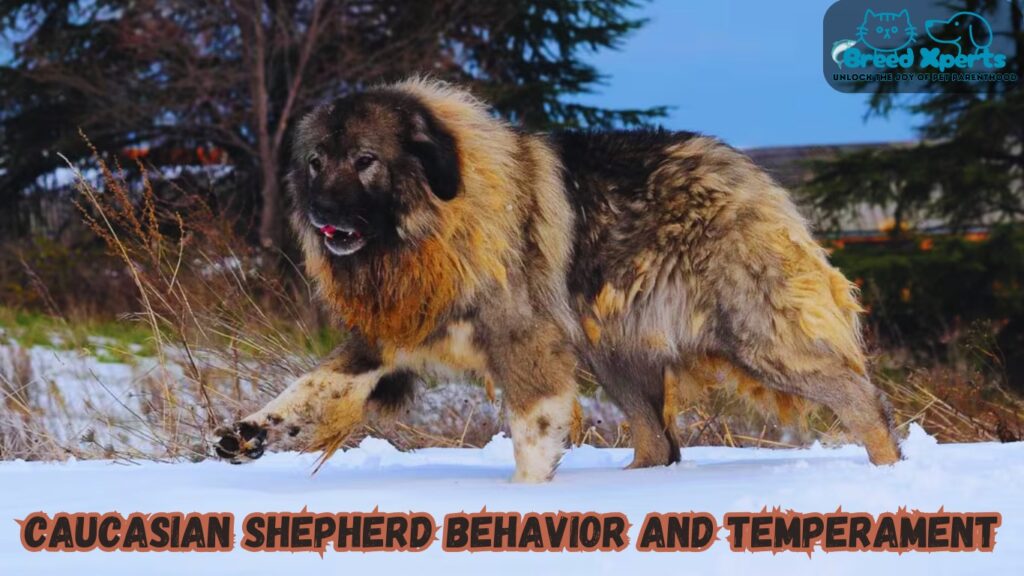
Behavior and Temperament
The Caucasian Shepherd Dog is highly valued for its robustly guarding nature. It’s instinctively territorial and takes a great deal of unknown people to be around. This breed is very devoted to the family and will never hesitate to defend them when necessary.
Independent, with intelligence, Caucasian Shepherds are receptive to training. Still, they need an assured owner who can set clear boundaries. Otherwise, they may get obstinate or even too authoritative when they don’t receive proper guidance.
Caucasian Shepherds are not too affectionate, but they bond well with their family. They are calm and composed with people they know, but they may be aggressive to strangers. Proper socialization and continuous training help them to suppress their protective instincts.
Housing
Due to the size of the Caucasian Shepherd Dog, they require a lot of space for dwelling. Ideally, they should be given an area of spacious yard or land where they can play and roam about safely.
This breed does not fit an apartment since it requires ample space to run around and to guard. They love spending time outside; hence, an enclosed safe area is required to prevent them from roaming.
Though they require space outdoors, Caucasian Shepherds also need to live with their family inside. They do well when they are taken into the everyday activities of living and socialized with their masters. Adequate shelter will ensure that they live comfortably and enjoyably.
Substrate
The dense fur of the Caucasian Shepherd Dog serves as a natural defense for its protection. It helps regulate body temperature, keeping them warm in cold conditions. Its fur is quite thick, giving it a warm barrier against harsh conditions.
This breed can be flexible about living conditions. They do well in the outdoors with grass, dirt, or gravel. A mild, clean space inside your home is also perfect to relax in.
Though they can tolerate harsh terrains, Caucasian Shepherds need proper bedding when it is cold. A warm indoor floor, such as blankets or pet beds, will help them keep warm. Providing a suitable resting place improves their general well-being.
Breed History
The Caucasian Shepherd Dog originates from the Caucasus Mountains that border Europe and Asia. This dog breed was developed to keep animals safe against such dangerous threats as wolves and bears, under hard mountainous conditions.
Their main purpose of acting as protectors made them so strong and guard-friendly. Farmers and shepherds cherished this breed as it excelled at safeguarding the animals and belongings of these owners against dangerous things in unfriendly terrain.
In some regions, Caucasian Shepherds were even used by military and police departments for their fidelity and watchful nature. Later, the breed spread across many countries and received fame for their intelligence, power, and valor. Nowadays, they are also serving as outstanding guard dogs as well as good friends.
Training and Care
Patience and perseverance would be the essence of training the Caucasian Shepherd Dog. While smart, such a breed might appear individualistic and unyielding; therefore, this canine must receive much early socialization, so desirably favorable behaviors would eventually develop using good reinforcement practices.
Socialization is important for this breed to ensure they are adjusted appropriately around other animals and people. Make them familiar with different environments, sounds, and situations early on. This will make them more malleable and less attached.
Care of a Caucasian Shepherd includes regular exercise to keep them healthy and fit. Their thick coat is naturally tanglesome, so they are to be groomed; in addition, they need regular veterinary check-ups to ensure that they live healthy and happy lives.
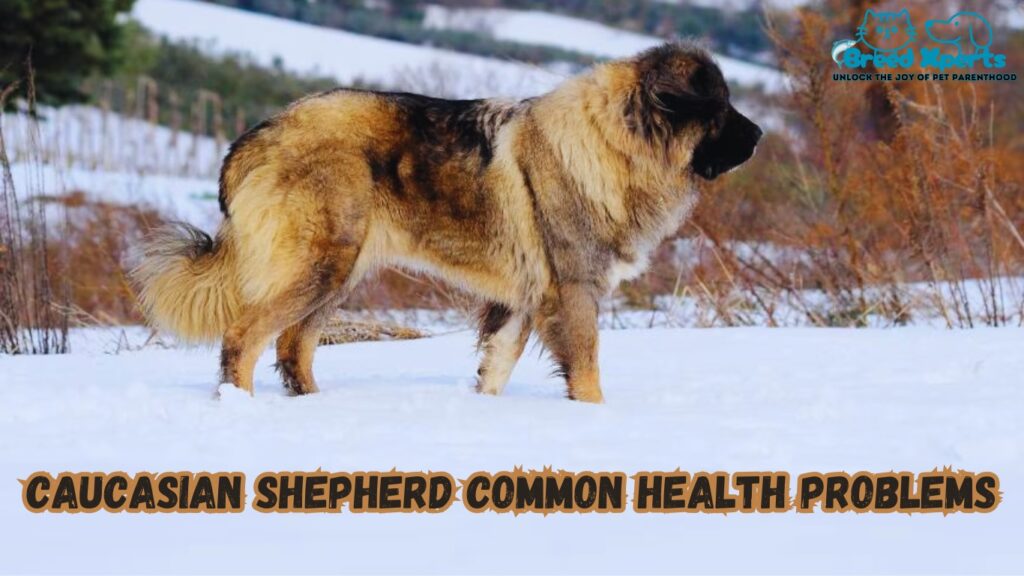
Health Problems
Usually very strong, Caucasian Shepherd Dogs are still prone to several health issues. The most common ones that develop are hip dysplasia, causing pain and difficulties in movement. It is common for this to be noticed with regular visits to the vet.
Another issue that the breed is vulnerable to is heart disease. As they mature, they tend to be more exposed to heart complications. Engaging the dog physically and making sure the dog remains within a healthy weight will also reduce the occurrence of heart issues, thereby prolonging the overall life of the dog.
Caucasian Shepherds generally have the problems of thick fur coats in them, where the fur on the back often brings out skin infections and hot spots. They keep those at bay through regular grooming and cleaning. Once the fur is kept up-to-date, there won’t be anything to bring their skin under pain.
Appearance
The Caucasian Shepherd Dog has a weighty and robust body. He looks strong. Dense fur protects the dog from freezing temperatures. The coat can be of length, middle, or short length and occurs in various hues like gray, white, and brown.
This dog has a broad head with a flat skull and a strong mandible. Its dark, oval eyes make it look keen and sharp. Its ears are of average size and usually hang downwards, making it look like a king.
The tail is long and soft, often curling over its back when the dog is active. Its legs are strong and muscular, giving it the ability to move with power and confidence. This breed certainly looks both striking and fearless.
Predators
The Caucasian Shepherd Dog is a powerful protector, thus it has few threats. Its great size and courage help it intimidate dangers. Wild creatures such as wolves or bears rarely assault this kind of breed.
This dog was bred to guard livestock against predators. It uses its strong physique and booming bark to protect its area. Predators usually do not want to face a bold and powerful dog.
Although it can ward off predators, the Caucasian Shepherd Dog still depends on humans. Proper training and attention make sure it stays vigilant and ready to defend. The breed is bold and powerful by nature, naturally acting as a protector against whatever danger may exist.
Population
The number of Caucasian Shepherd Dogs is constant but varies by region. It is mostly common in countries like Russia, Georgia, and Armenia, as people use it to guard animals and property.
Many breeders want to maintain the number of this breed. They have healthy breeding procedures to ensure sturdy and balanced dogs. This action keeps the breed popular among farmers and pet lovers.
The Caucasian Shepherd Dog is not endangered but is also widely spread over the world. It is rather a large and robust dog with significant size and character, so it is the best for special requirements. More and more people discover and adopt this devoted and protective dog because the interest in guardian breeds is increasing.
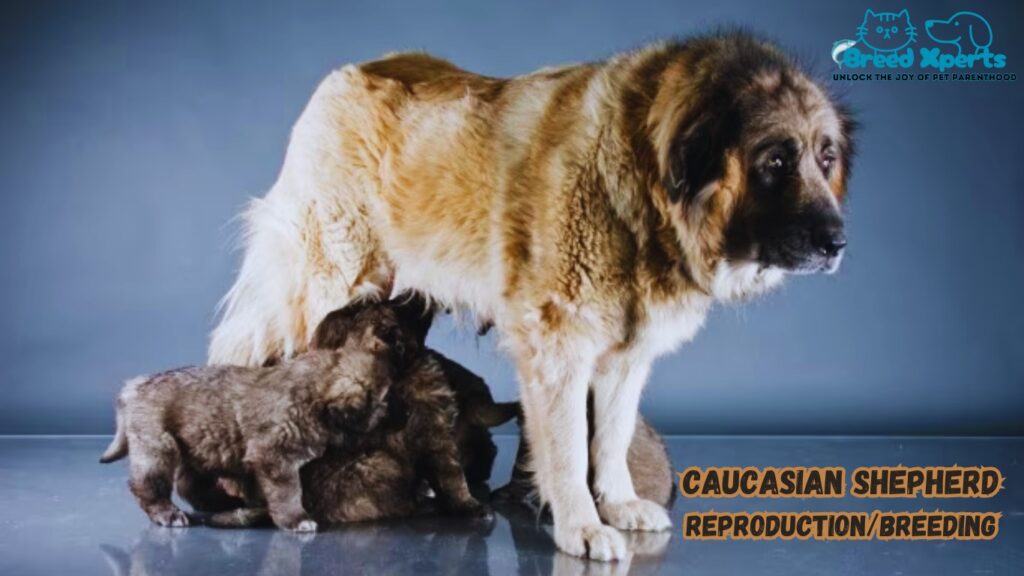
Reproduction/Breeding
Like all other big breed dogs, the Caucasian Shepherd Dog breeds. A female dog will have a heat cycle twice yearly. The dog breeders deliberately select healthy males and females to obtain strong and disciplined puppies.
These dogs need experience and care. The breeders seek to retain these features of the breed, which are power, loyalty, and the protection aspect. They ensure that the offspring is free from inherited diseases by breeding tests on their parents.
Caucasian Shepherd pups grow fast and need proper care. Breeders provide them with proper nutrition and social interaction during their first weeks. This helps puppies grow into well-rounded and healthy dogs. Ethical breeding ensures the future of this strong and devoted breed.
Pros & Cons as a Pet
The Caucasian Shepherd Dog has many positive aspects as a companion. The breed is loyal, protective, and great at protecting homes. It gets along well with children if properly socialized with them.
Of course, like all breeds, there are drawbacks. Its massive size and strength require professional handling. Unless well-trained, it can be stubborn or overprotective, making it more challenging to manage for inexperienced dog owners.
Ample space and a high level of physical activity are essential to this breed. It won’t be advisable to those apartment-dwellers, however busy its owners could be. Such dense fur coats do take loads of time for grooming. Despite such weaknesses, however, the Caucasian Shepherd Dog remains dependable and affectionate enough for suitable families.
Further Research
The Caucasian Shepherd Dog is a very interesting breed that requires more study. Researchers investigate its origin, which is associated with the Caucasus Mountains. Studying its history allows us to understand its specific features and abilities.
Genetic specialists also focus on its genetics and health aspects. They research ways to avoid common problems, such as hip dysplasia and heart disorders. This study ensures that this breed stays healthy and strong in the future.
Of further interest is behavior and training techniques. Research helps the owner understand what the dog would do naturally and how to correct its guarding instinct. Through research, we will be able to make the most of care and support for this devoted and powerful breed, thereby ensuring its prosperity in modern society.
Interesting Facts
The Caucasian Shepherd Dog is one of the world’s biggest breeds. Its size and thick coat make it appear like a giant bear.
This breed is fearless. Farmers in the Caucasus Mountains used it for the protection of their animals from threats such as wolves and bears. Its fearless nature makes it a reliable protector.
That makes him rather smart and self-sufficient. He would be able to make fast, independent decisions by a human. Of course, having such a sturdy appearance this breed can grow loving to their family if educated well. These characteristics render the Caucasian Shepherd Dog interesting and different.
FAQ:
Is a Caucasian Shepherd a good pet?
Caucasian Shepherds can make excellent family pets if they are trained and socialized appropriately from a young age. Their guarding instincts render them faithful protectors. Nevertheless, they need effective leadership and regular training. Take into account their dimensions and requirements for physical activity. Evaluate your family’s capacity to fulfill their needs.
Is Caucasian Shepherd the largest dog?
The Russian Ovcharka belongs to the large breed group, both in size and in weight. Nonetheless, it is inaccurate to refer to it as “the largest breed,” as there are several other breeds that surpass the Caucasian in size or weight.
Are Caucasian shepherds legal in the US?
Indeed, it is legal to own a Caucasian Shepherd in the United States.
Are Caucasian shepherds legal in the UK?
Two hundred years ago, the UK abolished slavery, meaning that a person herding sheep in the Caucasus could not be owned. If your inquiry concerns the dog breed, it is not one of the breeds prohibited in the UK; however, if you do not maintain proper control over any dog, you may encounter difficulties.
What is the most expensive dog?
Tibetan Mastiff
The costliest dog ever purchased was a red Tibetan Mastiff known as Big Splash, fetching around $1.5 million!
How strong is a Caucasian Shepherd bite?
A Caucasian Shepherd in an angry state can be quite a daunting presence, and its biting strength makes it an impressive protector against possible dangers. Our furry protector has developed a robust bite of 700 PSI, essential for defense and deterring dangers. Conversely, horses possess a weaker bite force of 500 PSI.
What is a giant Caucasian Shepherd Dog?
The Caucasian Shepherd Dog, also referred to as the Caucasian Ovcharka, is a large livestock protection dog that originated in the Caucasus region, particularly Georgia, Armenia, Azerbaijan, and Dagestan. It was bred in the Soviet Union from around 1920 using dogs from the Caucasus Mountains and the plains of Southern Russia.
What is the #1 biggest dog?
The Great Dane is usually accepted as the tallest breed, although the Irish Wolfhounds and the English Mastiffs are very good competitors. The Mastiff alone wins when both height and weight are concerned; no one would challenge his claim.
Which is better Caucasian or German shepherd?
German Shepherds adapt easily to urban settings, especially when you exercise and engage their minds significantly. Caucasian Shepherds require more expansive areas, like the suburbs or country settings, and they love nothing more than a yard to keep an eye on and space to roam.
Are Kangals good with kids?
Kangals can be quite aggressive when confronting threats but, inherently predictable and reliable, display loyalty and protectiveness make very exceptional partner and companion dogs, and are gentle on livestock as well as children.

